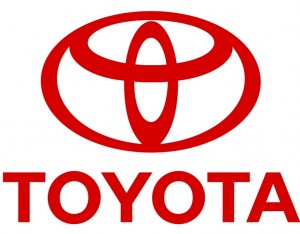
Internal documents show U.S. and Japanese Toyota officials debated whether to reveal a problem with defective accelerator pedals -- as required by law.
Newly-released documents show that Toyota officials in Japan and the United States spent months debating how to handle problems with defective accelerator pedals, even though the company was required to disclose safety-related issues to the U.S. government within five days of discovering such problems.
A senior American executive, worrying about the potential impact on the company’s once-bulletproof image, finally warned his colleagues at Toyota’s Japanese headquarters that if the automaker didn’t “come clean,” it might trigger the collapse of its business.
“WE HAVE a tendency for MECHANICAL failure in accelerator pedals of a certain manufacturer on certain models,” wrote Irv Miller, the outgoing group vie president of communications for Toyota Motor Sales USA, wrote to Katsuhiko Koganei, on January 16, 2010, using capital letters to underscore his concerns.
As TheDetroitBureau.com has reported, on several occasions, there was an apparent split between U.S. and Japanese Toyota executives over the company’s problems with so-called “sudden acceleration.” But the letter by Miller, who was scheduled to retire in January of this year, provides clear evidence of the problem, with the U.S. executive’s note insisting, “The time to hide on this one is over.”
In October 2008, the maker had recalled 3.8 million vehicles for what it described as “carpet entrapment,” where loose floor mats would occasionally jam accelerator pedals. In the weeks that followed, American executives described as “unwarranted speculation” reports of additional problems.
But a cache of tens of thousands of documents recently provided to U.S. officials by Toyota reveal that even before the first American recall — by no later than June 2009 — the automaker had already realized there was an additional problem with the actual accelerator pedal assembly on at least some Toyota models sold in Europe.
In the months that followed, the documents reveal, Toyota recognized the sticky accelerator pedal issue also plagued vehicles sold in the States.
But officials in Japan, it now appears, were reluctant to take the required next step, notifying the American government’s automotive safety watchdog, the National Highway Traffic Safety Administration, or issuing a second recall. Part of the problem, in Toyota’s eyes, was the lack of understanding as to what was causing the problem and, then, what to do about it.
In his own note to Miller and other U.S. and Japanese officials, Koganei cautioned that there was a concern about “the uneasiness of customers,” and recommended the company should sit tight “the remedy for the matter has not been confirmed.”
But, by mid-January, with the news media starting to close in on the problem – reports appearing in outlets like TheDetroitBureau.com, as well as on ABC News – Toyota officials finally decided to discuss the issue with regulators, in Washington. The face-to-face meeting, on January 19 of this year, included Yoshi Inabi, president of TMS, and Jim Lentz, Toyota’s top American executive.
Two days later, a second recall involving 2.3 million cars and trucks, was announced. And, under pressure from NHTSA, the automaker agreed, several days later, to halt sales of eight models impacted by the recall until those vehicles could also be repaired.
Since January, Toyota officials have struggled to put a positive spin on the crisis, insisting they were acting in the best interest of consumers by not only halting sales but also shutting down production at five North American plants until replacement parts could be delivered. The latest documents, however, suggest that Toyota had no choice but to take those steps once it reluctantly disclosed the defect to NHTSA.
The new disclosure underscores the announcement, earlier this week, that the Department of Transportation, which oversees the safety agency, will seek to levy a record $16.4 million in fines against Toyota for failing to reveal the accelerator pedal defect in a timely manner.
In the overall scheme of things, that figure is actually not all that much for a company that has more than $20 billion in ready cash, but the argument behind the fine sends a disturbing message to the market about Toyota’s policies and behavior. It also is likely to be raised when the 100s of lawsuits filed by Toyota owners – including families of those killed in sudden acceleration crashes – go to court.
A new statement by Toyota acknowledges, “We did a poor job of communicating during the period preceding our recent recalls. We have subsequently taken a number of important steps to improve our communications with regulators and customers on safety-related matters to ensure that this does not happen again.”
Among other things, the maker appointed a safety “czar,” last month, charged with overseeing such matters.
Following the DOT announcement, Toyota was given two weeks to decide whether to pay the $16.4 million fine or lodge an appeal.

Interesting that the US Executive was trying to get them to come clean. I think someone is going to get the axe for this blunder.
How do you say “smoking gun” in Japanese?